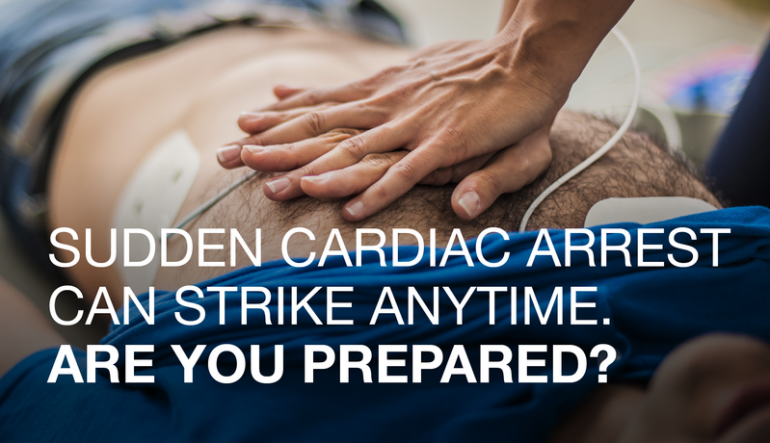How do we solve the sudden cardiac arrest problem?
Engineer and prolific inventor, Charles Franklin Kettering is credited with the phrase, “a problem well stated is a problem half solved.”
Kettering was talking about the importance of defining the problem before coming up with its solution.
Albert Einstein shared Kettering’s point of view, actually putting some numbers around it. “If I had an hour to solve a problem I’d spend 55 minutes thinking about the problem and 5 minutes thinking about solutions.”
It’s a far cry from the approach of self-help guru Tony Robbins, who is famous for preferring a comparatively inverse ratio of attention to problem and solutions. It may be unfair to suggest Tony is dismissive of critical thinking; it could be that he is cautioning us from getting too caught up in diagnosing a problem that requires rapid attention.
In any case, it’s unlikely Tony Robbins would advocate anything other than an accurate diagnosis of the problem before designing solutions.
Diagnosing the problem
Some of the world’s smartest, most dedicated people are currently trying to solve the problem of persistently high death rates associated with sudden cardiac arrest. If you’re reading this, you may even be one of those people.
The global out-of-hospital cardiac arrest survival rate is estimated to be as low as less than one per cent, resulting in between 7 million and 9 million deaths every year.
That’s the issue at hand. But is it the problem we are all trying to solve?
Cardiac arrest is a symptom of cardiovascular diseases, which are collectively, the world’s leading cause of death.
Right now, there are people and institutions dedicated to reducing the incidence of cardiovascular diseases.
There are also others who are focused on reducing the impact of sudden cardiac arrest – which is a related, but different, problem.
For those of us involved in the latter, part of our collective efforts are focused on reducing the incidence of cardiac arrest. Most of us though – including Emergency Medical Services (EMS), first responders and first aid trainers, we are attending to a different set of problems.
For us, the issue we are focused on is effective intervention in the moments following a sudden cardiac arrest.
Chain of survival
The first three steps in the out-of-hospital cardiac arrest Chain of Survival require the rapid assistance of someone, anyone who happens to be nearby in the moments following a cardiac arrest.
This person or persons, needs to firstly be able to recognise that there is an immediate need to call emergency services. They then need to start CPR (cardiopulmonary resuscitation) and ideally, use an AED (automated external defibrillator) for defibrillation.
This all needs to be done very quickly. For each minute this assistance is delayed, the patient’s chances of survival decrease by 10 per cent.
The “sudden” part of sudden cardiac arrest isn’t a misnomer. It happens quickly, usually with no warning.
All of this adds up to a high-pressure situation with plenty of opportunities not to go to plan.
It’s little wonder that so few people survive out-of-hospital cardiac arrest – which is another way of describing sudden cardiac arrest that occurs outside a clinical setting.
When treatment is applied quickly, chances of survival are relatively high. Too many people die however, because there either are no witnesses to the event, or witnesses are not ready or able to rapidly respond to revive the patient.
What is the underlying problem?
In this scenario, the problem we’re trying to find a solution to, isn’t the cardiac arrest itself.
The problem, is our ability to respond effectively in the event of an out-of-hospital cardiac arrest. This is a question of awareness. It is also a question of being prepared.
Lack of awareness, and preparedness, are the problems that most of the world’s most sophisticated and resourced health systems have not been able to solve.
As our founder, Donovan Casey wrote recently, there are exceptions to this situation. The city of Seattle is the poster-child example; more than 20 years of a collective effort to improve community cardiac arrest awareness and preparedness has resulted in a survival rate of 62 per cent.
Denmark’s Little Life Savers school CPR training program is another shining light. Within less than a decade of its introduction, out-of-hospital survival rates in Denmark had more than doubled.
These examples demonstrate that improving survival rates requires first and foremost, overcoming the barrier of lack of awareness.
That includes awareness of sudden cardiac arrest, as well as the methods and equipment required to save a life in the moments following a cardiac arrest.
The lesson here – and that word is fitting – is that lack of education is the immediate problem that needs solving. As Seattle, Denmark and many other cases have demonstrated, the greater the awareness and preparedness in a population, the better the chances of survival for people who suffer an out-of-hospital cardiac arrest.
RELATED ARTICLE: Being ready to buy time



